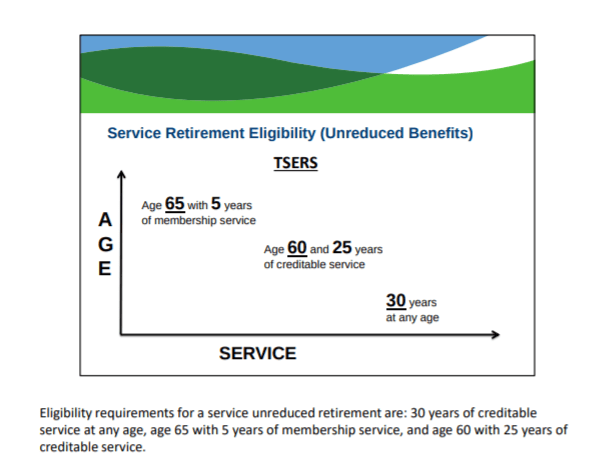Psychiatric Comorbidity in Autism Children with autism spectrum disorder (ASD) frequently have co-occurring (comorbid) psychiatric conditions, with estimates as high as 70 to 84 percent. A Comorbid disorder is defined as a disorder that co-exists or co-occurs with another...
Psychiatric Comorbidity in Autism
Children with autism spectrum disorder (ASD) frequently have co-occurring (comorbid) psychiatric conditions, with estimates as high as 70 to 84 percent. A Comorbid disorder is defined as a disorder that co-exists or co-occurs with another diagnosis so that both share a primary focus of clinical and educational attention. Research indicates that autistic children and youth have a high risk for meeting criteria for other disorders, such as mood and anxiety disorders, attention deficit/hyperactivity disorder (ADHD), and disruptive behavior disorders, all which contribute to overall impairment.
Internalizing Problems
Studies have consistently reported an association between ASD and internalizing symptoms, in particular, anxiety and depression. A bidirectional association has been identified between internalizing disorders and autistic symptoms. For example, both a higher prevalence of anxiety disorders has been found in ASD and a higher rate of autistic traits has been reported in youth with mood and anxiety disorders. Autistic individuals also display more social anxiety symptoms compared to typical individuals, even if these symptoms were clinically overlapping with the characteristic social problems of ASD. In addition, there is some evidence to suggest that adolescents and young adults with ASD show a higher prevalence of bipolar disorders as compared to controls.
Depression is one of the most common comorbid conditions observed in individuals with ASD, particularly higher functioning youth. A study of psychiatric comorbidity in young autistic adults revealed that 70% had experienced at least one episode of major depression and 50% reported recurrent major depression. Although another documented association is with obsessive-compulsive disorder (OCD), it is difficult to determine whether observed obsessive-repetitive behaviors are an expression of a separate, comorbid OCD, or an integral part of the core diagnostic features of ASD (i. e., restricted, repetitive patterns of behavior, interests, or activities).
Externalizing Problems
An association between ASD and attention-deficit/hyperactivity disorder (ADHD) and other externalizing problems (i. e., oppositional defiant disorder) have been reported. Studies have found that children with ASD in clinical settings present with co-occurring symptoms of ADHD with rates ranging between 37% and 85%. Although there continues to a debate about ADHD comorbidity in ASD, research, practice and theoretical models suggest that co-occurrence between these conditions is relevant and occurs frequently. For example, case studies suggest that ADHD is a relatively common initial diagnosis in young autistic children. It is also important to note that a significant change in the DSM-5 is removal of the DSM-IV-TR hierarchical rules prohibiting the concurrent diagnosis of ASD and ADHD. When the criteria are met for both disorders, both diagnoses are given.
Other Comorbidities
Tourette Syndrome (TS) and other tic disorders have been found to be a comorbid condition in many children with ASD. A Swedish study showed that 20% of all school-age children with ASD met the full criteria for TS. There also appears to be a higher incidence of seizures in children with autism compared to the general population. The comorbidity of ASD and psychotic disorders has received some research attention. A study of children with ASD who were referred for psychotic behavior and given a diagnosis of schizophrenia showed that when psychotic behaviors were the presenting symptoms, depression and not schizophrenia, was the likely diagnosis. Thus, autistic individuals may present with characteristics that could lead to a misdiagnosis of schizophrenia and other psychotic disorders.
Implications
Children and youth with ASD frequently have comorbid conditions, with rates significantly higher than would be expected from the general population. The most common co-occurring diagnoses are anxiety and depression, attention problems, and disruptive behavior disorders. The core symptoms of ASD can often mask the symptoms of a comorbid condition. The current challenge for practitioners is to determine if the symptoms observed in ASD are part of the same dimension (i. e, the autism spectrum) or whether they represent another condition. Although various psychometric instruments, such as clinical interviews, self-report questionnaires and checklists, are widely used to assist in diagnosis, these tools are designed and standardized to identify symptoms in the general population, and may not be appropriate and valid for use with ASD. Likewise, their administration may be problematic in that autistic individuals may have difficulties in sustaining a reciprocal conversation, reporting events, and perspective taking. Nevertheless, comorbid problems should be assessed whenever significant behavioral issues (e.g., inattention, impulsivity, mood instability, anxiety, sleep disturbance, aggression) become evident or when major changes in behavior are reported. Co-occurring conditions should also be carefully investigated when severe or worsening symptoms are present that are not responding to intervention or treatment.
Key References and Further Reading
American Psychiatric Association. (2013). Diagnostic and statistical manual of mental disorders (5th ed.) Washington, DC: Author.
Colombi,
C., & Ghaziuddin, M. (2017). Neuropsychological Characteristics of
Children with Mixed Autism and ADHD. Autism Research and
Treatment, 2017, 1-5. doi:10.1155/2017/5781781
Doepke,
K. J., Banks, B. M., Mays, J. F., Toby, L. M., & Landau, S. (2014).
Co-occurring emotional and behavior problems in children with Autism Spectrum
Disorders. In L.
Wilkinson (Ed.), Autism Spectrum Disorders in Children
and Adolescence: Evidence-based Assessment and Intervention in Schools (pp.
125-148). Washington, DC: American Psychological Association.
Duerden,
E. G., Oatley, H. K., Mak-Fan, K. M., McGrath, P. A., Taylor, M. J., Szatmari,
P., & Roberts, S. W. (2012). Risk factors associated with self-injurious
behaviors in children and adolescents with autism spectrum disorders. Journal
of Autism and Developmental Disorders, 42:2460–2470. DOI
10.1007/s10803-012-1497-9
Maenner,
M. J., Arneson, C. L., Levy, S. E., Kirby, R. S., Nicholas, J. S., &
Durkin, M. S. (2012). Brief report: Association between behavioral
features and gastrointestinal problems among children with autism spectrum
disorder. J Autism Dev Disord 42:1520–1525. DOI
10.1007/s10803-011-1379-6
Mayes,
S. D., Calhoun, S. L., Murray, M. J., & Zahid, J. (2011). Variables
associated with anxiety and depression in children with autism. Journal
of Developmental and Physical Disabilities, 23, 325–337.
Mazurek,
M. O., Vasa, R. A., Kalb, L. G., Kanne, S. M., Rosenberg, D., Keefer, A., et
al. (2013). Anxiety, sensory over-responsivity, and gastrointestinal problems
in children with autism spectrum disorders. Journal of Abnormal Child
Psychology, 41, 165–176.
Mazurek,
M. O., Kanne, S. M., & Wodka, E. L. (2013). Physical aggression
in children and adolescents with autism spectrum disorders. Research in
Autism Spectrum Disorders, 7, 455–465.
Mazzone,
L., Ruta, L., & Reale, L. (2012). Psychiatric comorbidities in Asperger
syndrome and high functioning autism: diagnostic challenges. Annals of
General Psychiatry, 11:16. doi:10.1186/1744-859X-11-16
Sikora,
D. M., Vora, P., Coury, D. L., & Rosenberg, D. (2012).
Attention-Deficit/Hyperactivity Disorder Symptoms, Adaptive Functioning, and
Quality of Life in Children With Autism Spectrum Disorder. Pediatrics,
130, S91-97. DOI: 10.1542/peds.2012-0900G
Strang,
J. F., Kenworthy, L., Daniolos, P., Case, L., Wills, M. C., Martin, A., et al.
(2012). Depression and anxiety symptoms in children and adolescents with autism
spectrum disorders without intellectual disability. Research in Autism
Spectrum Disorders, 6(1), 406–412.
Tureck,
K., Matson, J. L., May, A., Whiting, S. E., & Davis, T. E., III. (2013).
Comorbid symptoms in children with anxiety disorders compared to children with
autism spectrum disorders. Journal of Developmental and Physical
Disabilities. doi: 10.1007/s10882-013
Wilkinson,
L. A. (2015). Overcoming Anxiety on the Autism Spectrum: A Self-Help
Guide Using CBT. London and Philadelphia: Jessica Kingsley Publishers.
Wilkinson,
L. A. (2017). A best practice guide to assessment and
intervention for autism spectrum disorder in schools (2nd ed.). London
& Philadelphia : Jessica Kingsley Publishers.
Lee A. Wilkinson, PhD, is a licensed and nationally certified school
psychologist, and certified cognitive-behavioral
therapist. He is author of the award-winning books, A
Best Practice Guide to Assessment and Intervention for Autism and Asperger
Syndrome in Schools and Overcoming
Anxiety and Depression on the Autism Spectrum: A Self-Help Guide Using CBT. He
is also editor of a text in the American Psychological Association
(APA) School Psychology Book Series, Autism
Spectrum Disorder in Children and Adolescents: Evidence-Based Assessment and
Intervention in Schools. His latest book is A
Best Practice Guide to Assessment and Intervention for Autism Spectrum Disorder
in Schools (2nd Edition).















